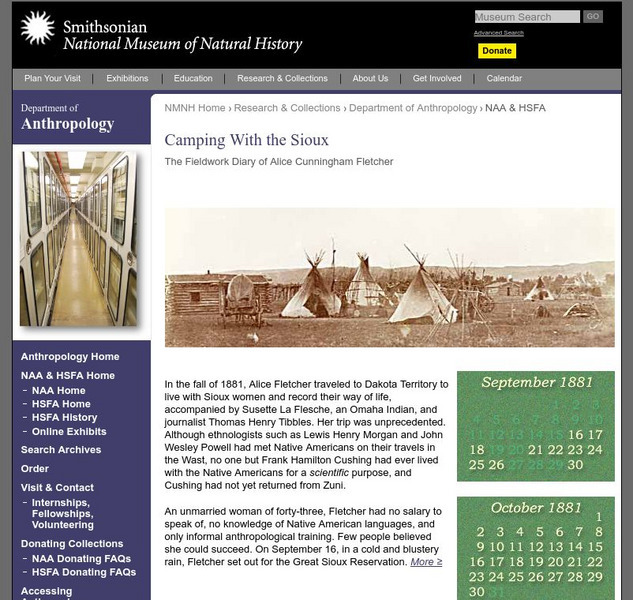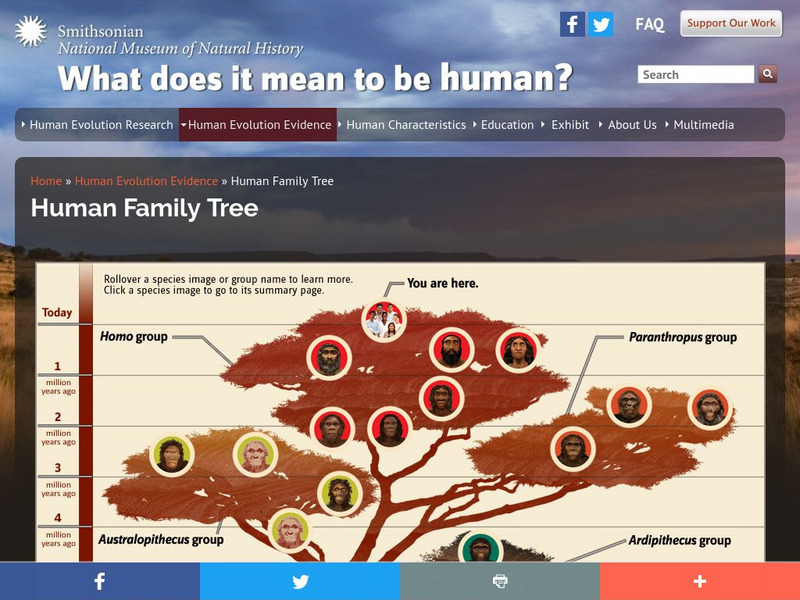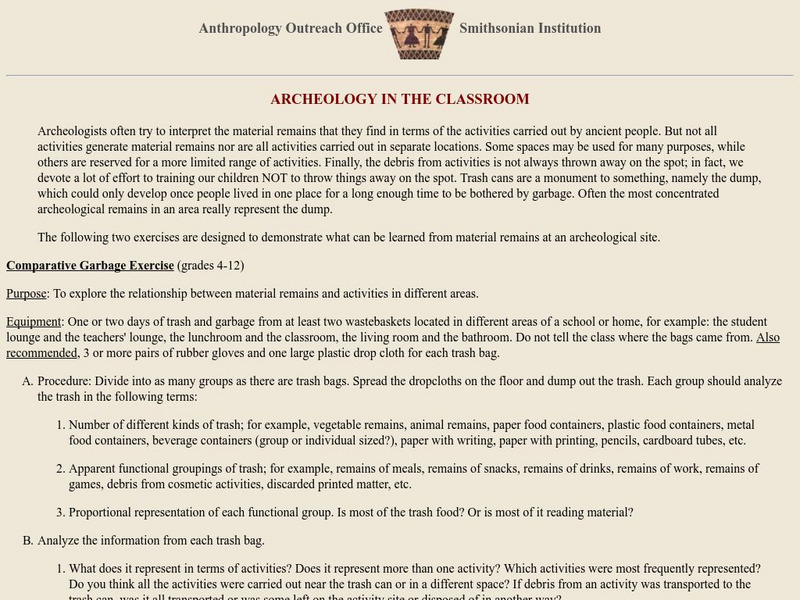Smithsonian Institution
National Museum of Natural History: Ocean Planet: Ocean Currents
The Ocean Planet exhibit at the Smithsonian explains the general features of ocean circulation. A general look at upwelling, deep water, and currents are combined for an overall view.
University of Florida
Florida Museum of Natural History: Identify a Florida Snake
This field guide to the snakes of Florida has everything you need to identify one, including drawings of scale patterns and excellent photographs, as well as how to recognize which ones are venomous. Also included is a section on how to...
Smithsonian Institution
National Museum of Natural History: Paleobiology: The Silurian Period
Journey into the past while reading this comprehensive overview of the Silurian Period that covers topics such as life in the seas, invasion of land, fossil evidence, and climate and geology.
Smithsonian Institution
National Museum of Natural History: Camping With the Sioux: Fieldwork Diary of Alice Fletcher
A fascinating site that presents the story of Alice Fletcher who traveled to Dakota Territory to live with Sioux women. Click on dates on the calendar for diary entries. Also includes historic photo gallery.
Idaho State University
Idaho Museum of Natural History: Guide to the Plants of Idaho State Arboretum
This resource describes the different plants of the Idaho State Arboretum in Pocatello. Users are provided with a picture and a description of every plant in the arboretum. You can click on the pictures for a larger view.
Smithsonian Institution
National Museum of Natural History: The Origin of the Genus Homo
The evolution of the Genus Homo is neatly laid out in a chronological fashion beginning with the key change that signaled the origin of Homo, through the evolutionary forms, finalizing with Homo sapiens.
Smithsonian Institution
National Museum of Natural History: Department of Botany
Visit the Smithsonian's Department of Botany, and search online from the specimen collection of nearly 800,000 plant specimen records. In addition, learn about research being conducted, activities and events hosted by the department,...
Smithsonian Institution
National Museum of Natural History: Ocean Planet
Detailed website that was a companion to a 1995 traveling exhibit of the Smithsonian. Links to lesson plans and other educational materials are at the bottom of the page. Enter the exhibition to explore the world of the ocean.
American Museum of Natural History
American Museum of Natural History: North American Ethnographic Collection
The Division of Anthropology was established at the AMNH in 1873, only four years after the founding of the museum. During its first 17 years, the department was concerned almost exclusively with the acquisition and display of artifacts....
American Institute of Biological Sciences
Action Bioscience: Natural History Museum Collections in the 21st Century
Discover why some people feel that natural history museums are more import now than they have ever been. Familiarize yourself with some of the challenges these museums are facing.
Smithsonian Institution
National Museum of Natural History: Human Origins: Human Family Tree
Find the human ancestor you are interested in and click on it either in the timeline or the list below for more details. Each fossil or reconstruction pictured includes links to more details about it.
Smithsonian Institution
National Museum of Natural History: The Canela Indians
Journey to Brazil and visit the Canela Indians. Learn all about their culture and view artifacts and video footage.
Smithsonian Institution
National Museum of Natural History: Ocean Planet: In Search of Giant Squid
An on-line exhibit archived from a Smithsonian exhibit explores and interprets the facts and myths surrounding giant squids - the world's largest invertebrates.
Smithsonian Institution
National Museum of Natural History: Written in Bone: Forensic Files of the 17th Century Chesapeake
This very thorough site will fascinate those interested in forensic anthropology. You will learn what you can read from bones, how a face can be reconstructed from a skull, clues you can read from a burial, and about forensic cases both...
PBS
Pbs Learning Media: Frames of Reference
Explore how different frames of reference affect your perception of motion in this interactive activity from the American Museum of Natural History.
Other
Denver Museum of Nature and Science: Ancient Denvers
What did Denver look like millions of years ago? Find out the answer to this and see how it has changed over time. There is also a list of parks to visit in Colorado.
Smithsonian Institution
National Museum of American History: Feather Trade and the American Conservation Movement
The 19th century love for feather adornments led to a hue and cry by conservationists against the wholesale killing of birds. This site details the time, the feather trade, and the move to curtail it.
Natural History Museum
Natural History Museum (Uk): Biodiversity
Find a wealth of scientific information on the status of biodiversity in the world today, the threats it faces, and why it is critically important to preserve it.
Natural History Museum
Natural History Museum: Volcanoes and Earthquakes
As an online exhibit from the Natural History Museum, this site provides three videos on natural processes of Earth. The videos cover tsunamis, earthquakes, and volcanoes.
Natural History Museum
Natural History Museum: Birds Exhibit
An online exhibit from the Natural History Museum, this site is home to six individual topics related to birds including four videos on different aspects and types of birds.
University of Florida
Baldwin Library: The Pictorial Museum of Sport and Adventure by F. Warne and Co.
This is an online photocopy of the original of the children's book The Pictorial Museum of Sport and Adventure by Fredrick Warne and Co., a record of deeds and daring escapes, accounts of various countries and their inhabitants, "the...
Smithsonian Institution
National Museum of Natural History: Archeology in the Classroom
Two different leveled lessons allow students to become archeologists as they interpret material remains left behind by ancient people.
Smithsonian Institution
National Museum of Natural History: Canela Body Adornment
Among the Canela of Brazil, adorning the body enhances appearance, signals changes in social identity, and expresses culturally prescribed values. View vivid photos of the different cosmetic treatments men and women undergo.
Smithsonian Institution
National Museum of Natural History: Paleobiology: Blast From the Past!
Examine evidence of a deep-sea core that provides evidence of an asteroid impact sixty-five million years ago, which may have contributed to the extinction of the dinosaurs.



















